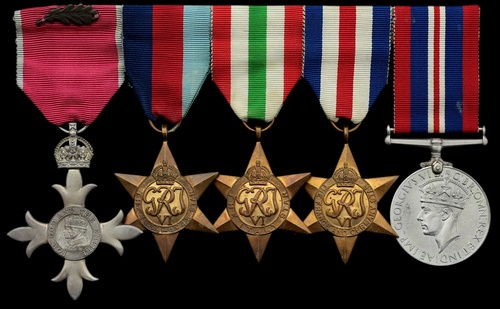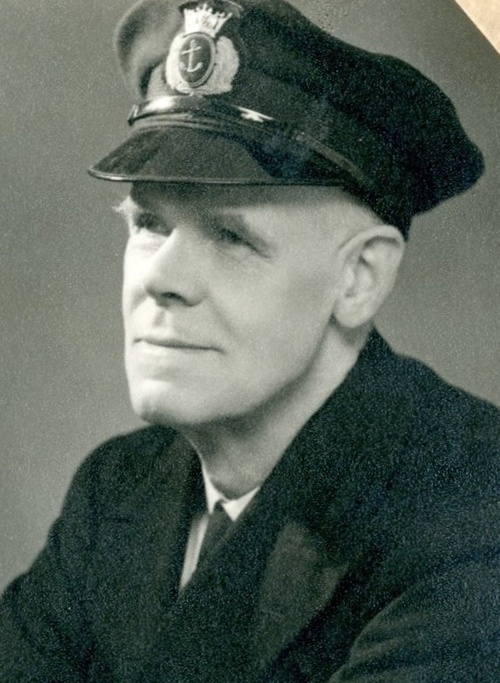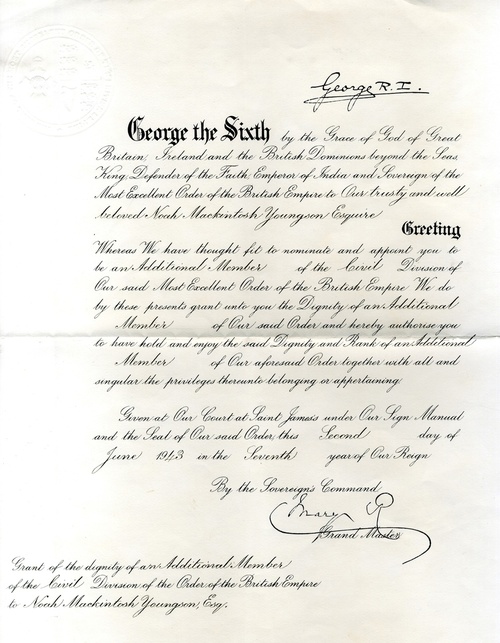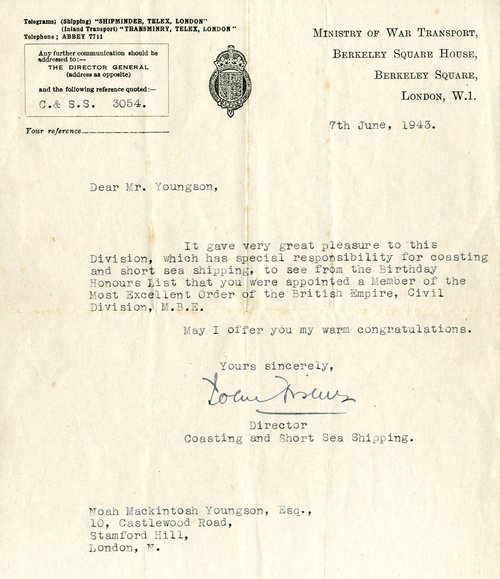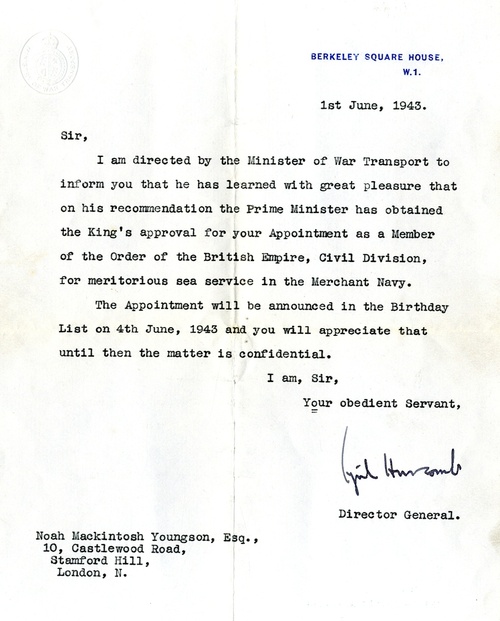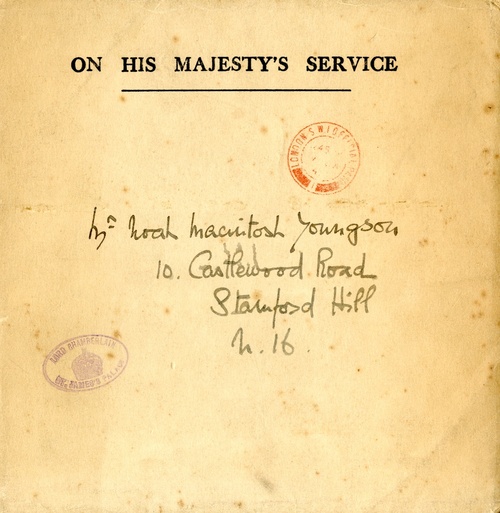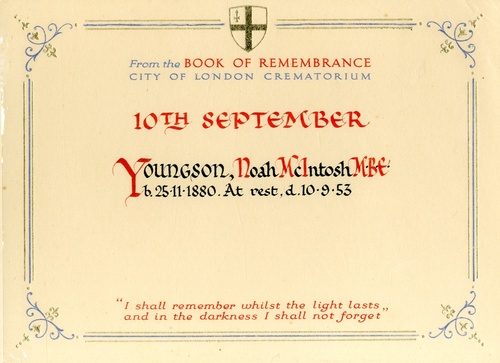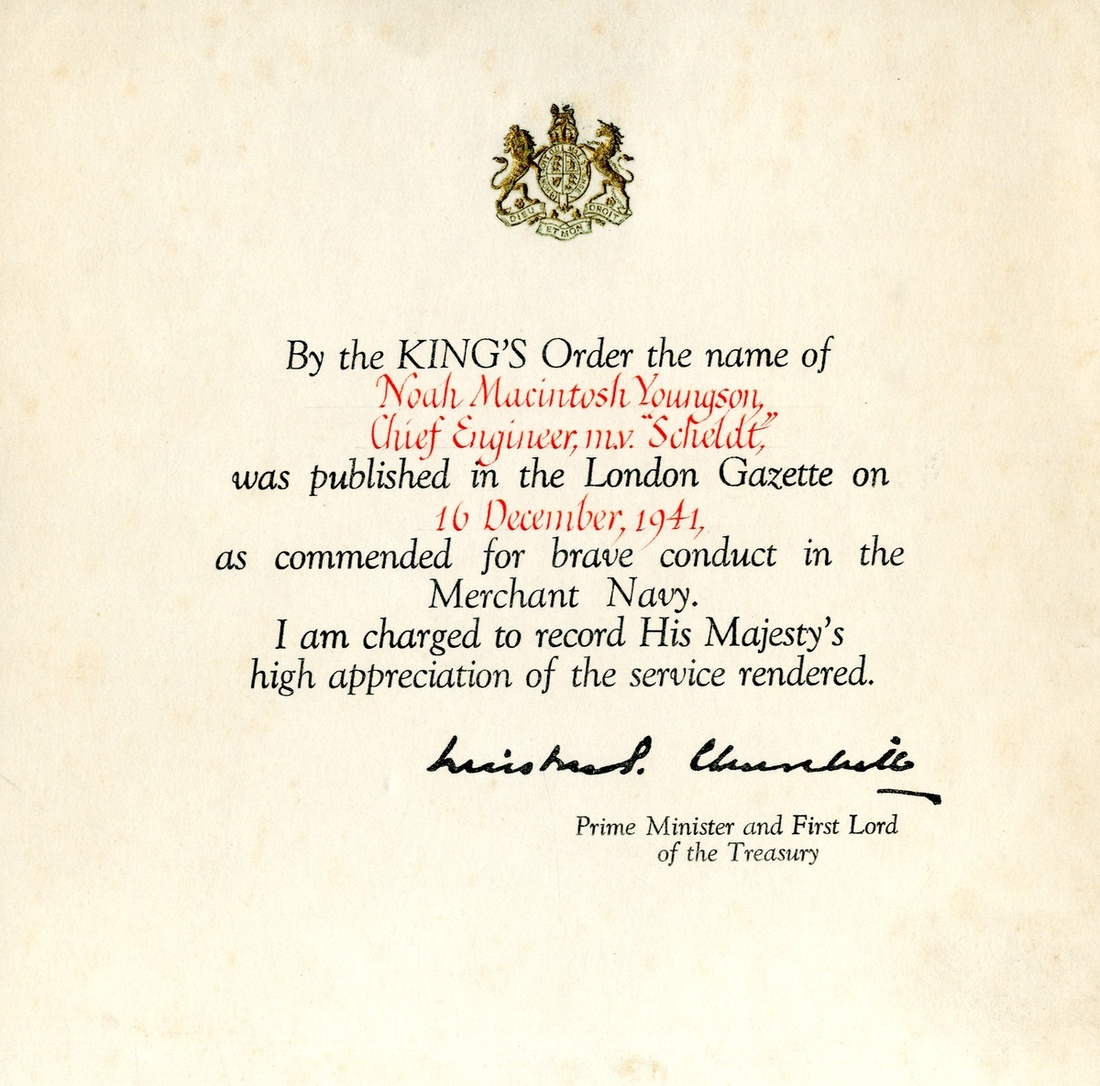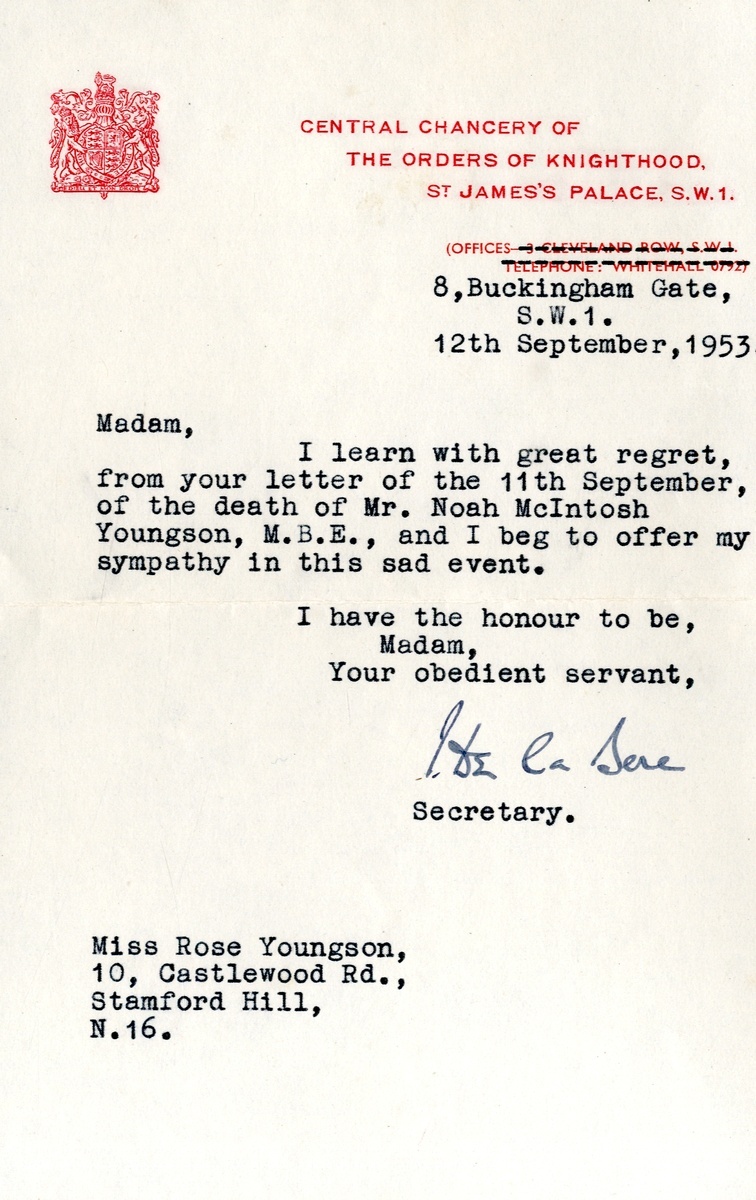Auction: 22075 - Orders, Decorations and Medals
Lot: 112
'The rest is almost an anti-climax, at low water the hole was plugged and at high tide the ship was towed into Barry Docks on an even keel. The ship is in hand and engine damage once repaired she will once more go out on her lawful occasions but if anyone deserves a medal then that Old Scots Engineer should get his rewards, for he showed a marvellous devotion to duty and snatched useful prey from one of Hitler's war birds.'
The Race Against Time - An Epic of the Small Vessel Merchant Navy, refers.
The rare and well-documented 'M.S. Scheldt King's Commendation, M.B.E. group of six awarded to Chief Engineer N. M. Youngson, Merchant Navy, commended for his actions in nursing Scheldy into port after she was attack by Dornier bombers off Milford Haven, later awarded the M.B.E. for his work in keeping Britain supplied during the difficult war years
The Most Excellent Order of the British Empire, 2nd Type, Civil Division, (M.B.E.) Member's breast Badge; 1939-45 Star; Italy Star; France and Germany Star; War Medal 1939-45; King's Commendation for Brave Conduct, its card box of issue, the campaign medals mounted for wear, very fine (6)
M.B.E. London Gazette 4 June 1943.
King's Commendation for Brave Conduct London Gazette 12 December 1941.
Noat McIntosh Youngson was born at Fraserburgh, Aberdeenshire on 25 November 1880. At the time of the attack upon the Scheldt Youngson had been at sea for nearly fourty years and had risen from the rank of Crew (Donkeyman) in 1911 to Chief Engineer in 1938.
The Scheldt was off the coast of South Wales on the evening of 25 September 1941 when a Dornier bomber spied her and attacked. The first bomb clattered off the side- failing to detonate- but the second proved a near miss, with the shrapnel tearing a hole in the ships hull. By this time the deck crew were responding and an increasingly heavy fire whipped up into the evening sky, forcing the bomber to break off and withdraw. Youngson was below decks when the attack began but rushed up as soon as possible to see what had happened and assess any damage.
He was soon directed to the engine room where a scene of chaos met his eyes, the ship was holed and a mix of oil and water were rising steadily. Finding a piece of wood and shaping it to the right size Youngson forced it into the hole, obstructing- but not stopping- the flow of water. The Aberdeen Journal 5 August 1943 paints the picture, stating:
'Chief Engineer Youngson, working up to the waist in water in the engine-room, managed to check the inrush of water by packing the holes with blocks of wood and other materiel.'
It was at this stage that both Ballast and General Service pumps were found to be broken and there was little way to try and account for the intake of water. Fortunately Youngson thought quickly and rigged the pump to the main engine, so long as the engine turned the pump would function.
Reporting to Captain William J. Harvery, a comrade of over 19 years by that point, Younson explained that if they maintained their speed the water could be kept level. Alternately should the engine stop it would be impossible to start it- and by extension the pumps- again. Despite the nearest port being Milford Haven it was felt that trying to sort the situation out at night while maintaining speed would be impossible. As such the Scheldt pressed on for Swansea Bay and their eventual destination of Barry Docks.
Throughout the white-knuckled journey Youngson was constantly monitoring the engine, the only thing keeping the ship afloat as The Race Against Time states:
'It was a miracle and all credit is due to the Chief and his indomitable crew who nursed their engines with such care, noting each feature and feeling his charge with his practised hands. It was when feeling one casing that he blistered his hand and discovered the casing of the Mitchel Thrust block and the oil gone. Another minute or two and the engines would have seized and the end was certain. Oil was poured on by hand and all during the night every five minutes or so to keep the block lubricated. That was just one of the troubles that beset the Engine room staff but nothing stopped them. The Chief and his staff had decided those engines must be kept running and they just were that is all there was to say about it. From 8 p.m. until 10 a.m. they were at it working devotedly in that very unpleasant hell below.'
The battered Scheldt limped into Barry Dock after a horrific journey spent almost waist deep in water with the ship rolling in the heavy swell. Even then they could hardly anchor and stop the engines so several hours were spent sailing in circles while it was decided what to do. Eventually Scheldt was beached at Whitmore Bay with the aid of a tug and, thanks to the minstrations of her Chief Engineer, the engines continued to turn until the last moments.
Despite his age Youngson continued his service in the Merchant Navy, being appointed a member of the Order of the British Empire in 1943 for his continued work. Sadly he was not to live much longer, dying in late summer 1953 and being cremated at the City of London Crematorium on 10 September; sold together with copied research including extracts from both the London Gazette and Aberdeen Journal, pictures of the MS Scheldt and copies of its logs during the Second World War as well as census data and Merchant Navy records, along with an archive of original documentation comprising:
(i)
Two photographs.
(ii)
An original and two copied versions of The Race Against Time.
(iii)
M.B.E. award document.
(iv)
Correspondance from the Central Chancery and Ministry of War Transport relating to the award of the M.B.E.
(v)
The official award of the King's Commendation in its original OHMS letter.
(vi)
A letter of condolence from the Central Chancery addressed to Miss Rose Youngwood.
(vii)
Several memorial cards.
Subject to 20% VAT on Buyer’s Premium. For more information please view Terms and Conditions for Buyers.
Sold for
£800

